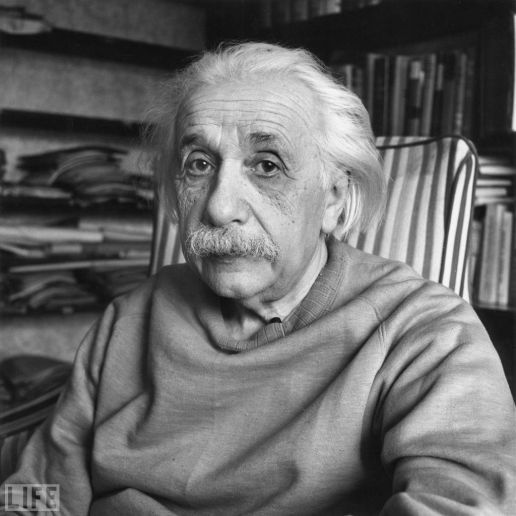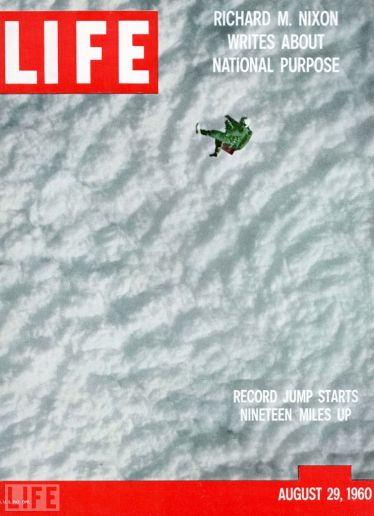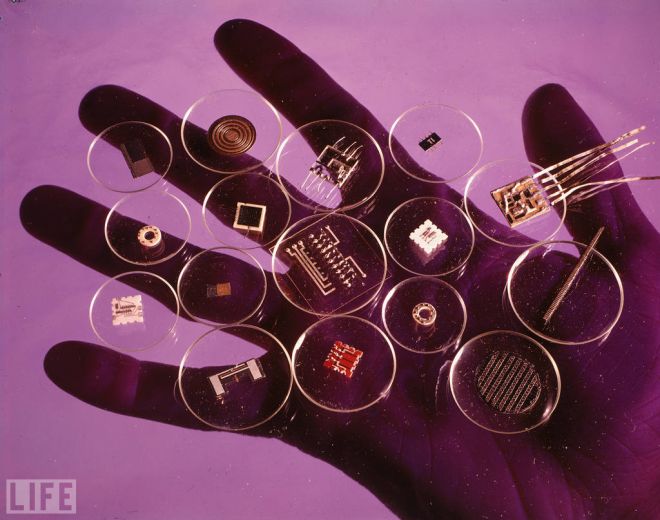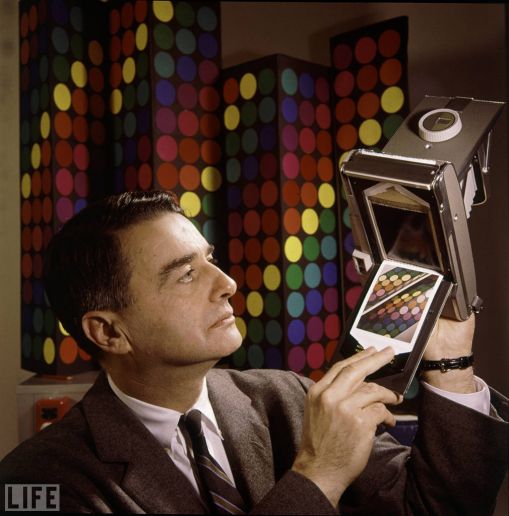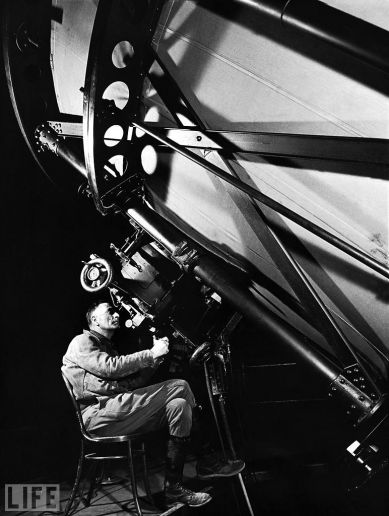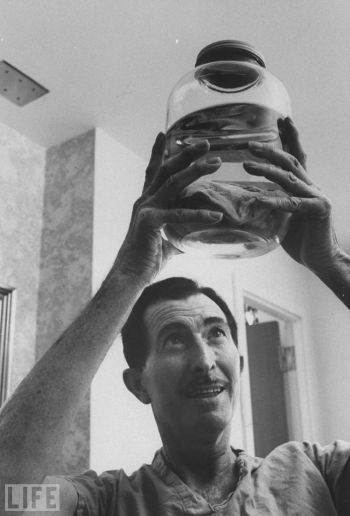The still-astonishing April 30, 1965 LIFE cover image by the pioneering Swedish photographer Lennart Nilsson features an 18-week-old fetus(胎儿) inside its amniotic sac(羊膜囊). As the cover text notes, the color image of the fetus and placenta(胎盘) was a photographic breakthrough at the time, with LIFE proudly writing, "This is the first portrait ever made of a living embryo(胎儿) inside its mother's womb."
LIFE's Alfred Eisenstaedt took iconic photos of some of the 20th century's most famous figures -- Marilyn Monroe, Sophie Loren, and more -- but for immediacy and intimacy, none of his portraits surpassed this picture of the single most recognizable scientist in history.
On August 16, 1960, 32-year-old U.S. Air Force Captain Joe Kittinger flew in a helium(氦)-balloon gondola(气球吊篮) to 102,800 feet (roughly 19 miles) above the Earth ... and jumped. His free-fall lasted 4 minutes and 36 seconds. He experienced temperatures approaching minus-100 degrees Fahrenheit. As he fell, Kittinger neared the speed of sound, his pressure-suit-encased(pressure suit: 增压服) body traveling at more than 600 mph before he opened his parachute at 14,000 feet.
A handful of microelectronic parts in 1960. For the March 10, 1961 issue, LIFE enthused about their future usages, noting "the inside of a TV set may in a decade or two be wonderfully simplified -- no tangle(乱糟糟缠在一起的一团) of wires and tubes, just two or three chips of crystal engraved and etched(蚀刻) like jewelry." Indeed!
Edwin Land, the president and co-founder of the Polaroid Corporation, demonstrates his company's "60-second film" in 1963. By allowing photographers to see (almost) immediately what they had shot, Polaroid revolutionized photography and foreshadowed(预示), in a way, the advent[(尤指不寻常的人或事)出现, 到来] of digital photography and its unspoken creed of instant gratification.
The Missouri-born Edwin Powell Hubble (1889-1953) is responsible for discoveries including what is now known as Hubble's Law, which states that the farther a galaxy is from ours, the faster it's moving away from us. His proof that the universe is expanding at an inconceivably(不可思议地) rapid rate helped paved the way for the "Big Bang" theory.
Here, in a Bourke-White image that is, arguably, the single greatest photograph ever made of a scientist at work, Hubble gazes at the heavens in 1937 through the massive 100-inch Hooker telescope(胡克望远镜) at California's Mt. Wilson Observatory.
A gigantic(巨大的) cloud of radioactive dust rises from the desert floor in Nevada while seven miles away photographers -- including LIFE's J.R. Eyerman -- and other members of the press watch an A-bomb test in 1953.
"Scientists have discovered a startlingly(令人吃惊地) ingenious(有天才的) way to transmit images around corners and a whole new American industry is being born." So LIFE wrote in its October 17, 1960 issue, discussing an innovation called "fiber optics(纤维光学)." Here, LIFE's Fritz Goro celebrates the breakthrough as Dr. Walter P. Siegmund, an optics specialist scientist, demonstrates.
Photographic evidence of a medical first: Ralph Morse's picture of heart transplant patient George Debord examining his own (former) diseased heart.
The industrialist, aviator, and film producer Howard Hughes sits with an engineer inside the cavernous(似巨穴的) sea plane, "the Spruce Goose," in Los Angeles on November 6, 1947. The Goose (made, in fact, primarily of birch, not spruce) was the largest flying boat ever built. J.R. Eyerman's portrait of Hughes inside his enormously ambitious invention -- the interior of which seems to recede into the distance, endlessly, behind him -- hints at not only the plane's monumental scale, but at Hughes' audacity as an engineer and a showman.



